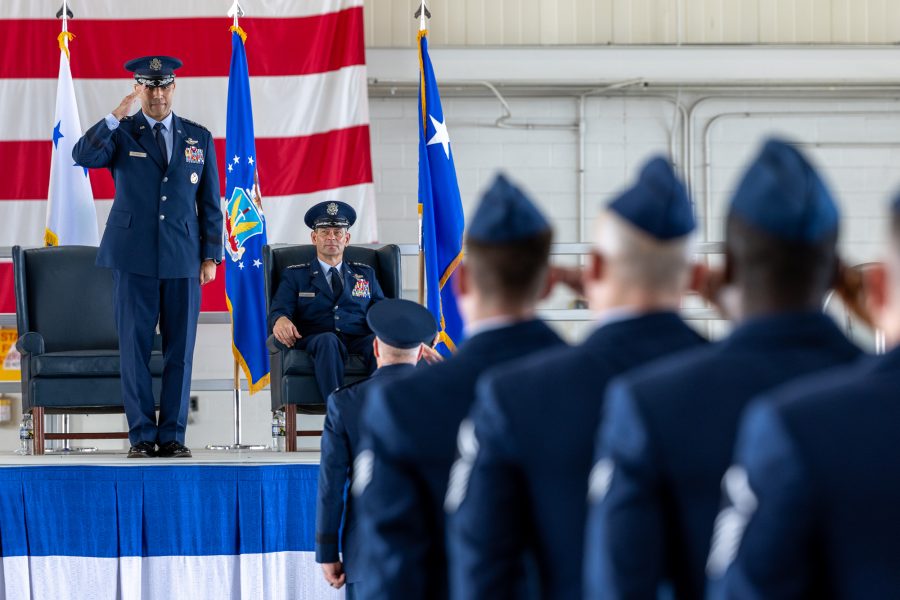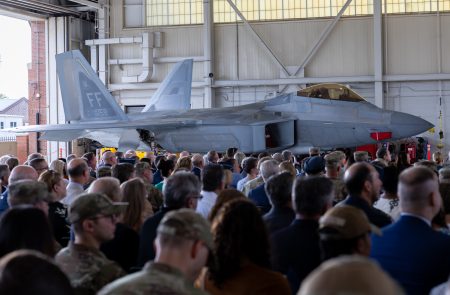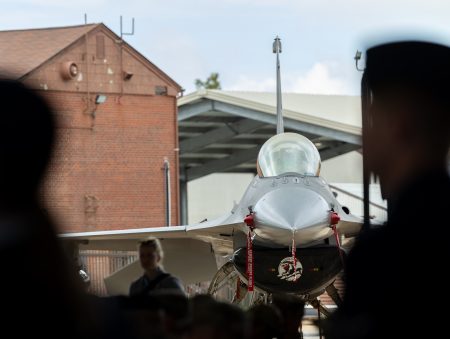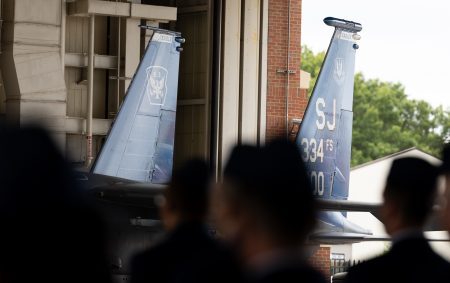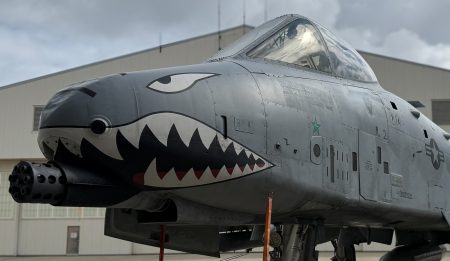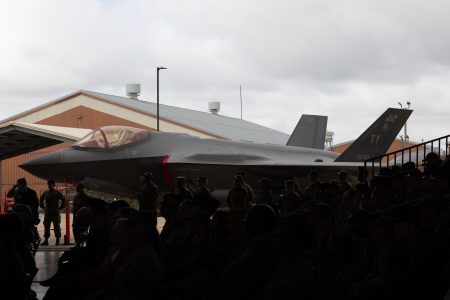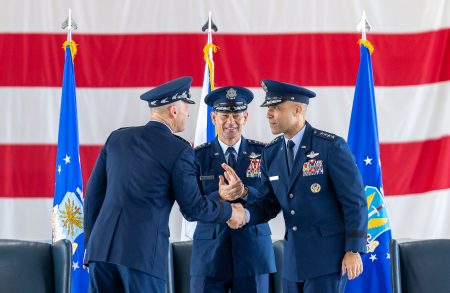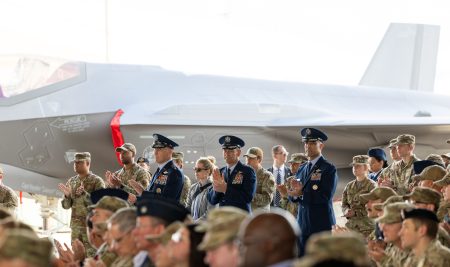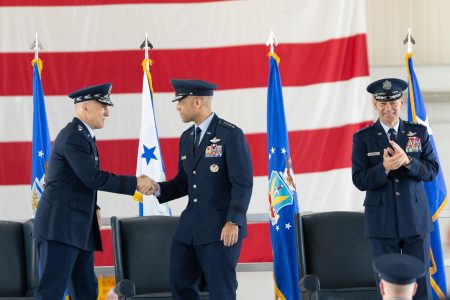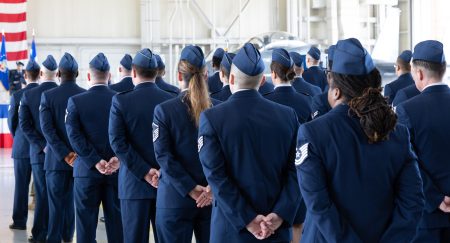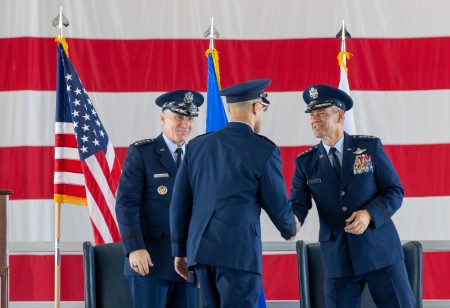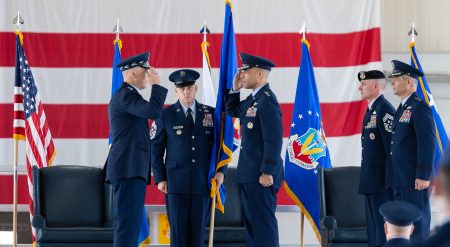JOINT BASE LANGLEY-EUSTIS, Va.—Air Combat Command, which oversees most of the Air Force’s combat aircraft fleet, has a new boss in Gen. Adrian L. Spain, who succeeded Gen. Kenneth S. Wilsbach in a ceremony here Aug. 11.
The change at one of the service’s core institutional commands comes at a significant time for the Air Force, which is adapting its strategies, doctrine, deployment models, and aircraft to confront China’s growing might and a resurgent Russian military.
Air Force Chief of Staff Gen. David W. Allvin, who presided over the ceremony, recited a familiar refrain of his nearly two-year tenure: that the Air Force is facing a threat unseen since the Cold War.
“We have continuously looked at the aggression and the coercive activities of the People’s Republic of China—that arc has not changed,” Allvin said. “After February [2022], when Russia invaded Ukraine, people started talking about how maybe air superiority was obsolete, it didn’t matter anymore, the battlefield had changed—not recognizing that it was the inability or the unwillingness to appropriately apply airpower that was as much the cause of that as anything.”
Air Combat Command will be a key command responsible for ensuring U.S. tactical airpower is appropriately applied on the modern battlefield.
“I truly believe that ACC is the heart and soul of our Air Force,” Spain said in an address. “We have a lot to focus on, but our primary focus must be on readiness—readiness of our aircraft, readiness of our aircrew, readiness to dominate the electromagnetic spectrum, readiness of all our Airmen and their families. … I’m not interested in arbitrary timelines or functional efficiency at the expense of warfighting effectiveness. We’ll get a little bit better today, so we are a little more ready tomorrow.”
Air Combat Command—comprised of more than 100,000 Airmen, 1,000 aircraft, and two dozen wings—has been tasked as the primary command for improving the readiness of the Air Force. It will do so by deploying future capabilities and more frequent training—a mission for which Allvin said Spain, a career F-22 and F-15 pilot who has spent around half his career in ACC, is well suited.
“The future is interactive. We don’t want [2027] to be the year. We want ’27 to be another year when the adversaries say, ‘Eh, we’re not quite ready yet,’” Allvin said, referring to the year when Chinese leader Xi Jinping wants his armed forces to have the capability to take Taiwan.
“We do know this: our potential adversaries have not changed their minds,” Allvin said. “They have not changed the development of capability. So we need to double down on our readiness today and into tomorrow. Enter Adrian Spain.”
Air Combat Command is at the forefront of important Air Force doctrinal shifts, such as agile combat employment. Though ACE is a service-wide initiative to be able to operate in a more dispersed manner—primarily in the Pacific—Air Combat Command’s fighters are permanently based in the United States and deploy overseas.
“We can’t just be a one-trick pony,” Wilsbach said “We’ve got to be able to be agile and move to where the requirements of the globe matter.”
Spain, who most recently served as the Air Force’s deputy chief of staff for operations—known as the A3—at the Pentagon, helped shape the development of the Air Force’s future force management and training policies. He has spent much of the last few months on Capitol Hill after the February firing of former Air Force Vice Chief of Staff Gen. James Slife, helping fill in to brief lawmakers on the state of the service’s readiness and modernization initiatives.
“Every ACC commander … has had a mandate to focus on readiness,” Spain said. “What’s going to be different this time? Well, I don’t know. But what I do know is that in this moment, it’s not someone else’s challenge … Will we solve our readiness challenges? I intend to, but we need each other, because help is not coming—at least not yet.”
ACC has been charged with leading increased training across the Air Force by running major exercises like Red Flag and Bamboo Eagle, which are feeding into ever-larger exercise series across the entire Air Force like the massive Department-Level Exercise taking place this summer across the Pacific. The command will also soon begin fielding Collaborative Combat Aircraft drones and the future sixth-generation F-47 fighter. The Air Force has also recently altered or tightened many appearance standards and uniform regulations, which ACC tightly enforced under Wilsbach.
“The work the Chief and the Secretary [of the Air Force Troy Meink] are doing to focus on our foundational readiness is substantial, and it’s the right thing. But it’s going to take a while to manifest,” Spain said. “What we do between now and then will be decisive. We must be prepared and adapt now to maximize the opportunity for increased resources in the future.”
